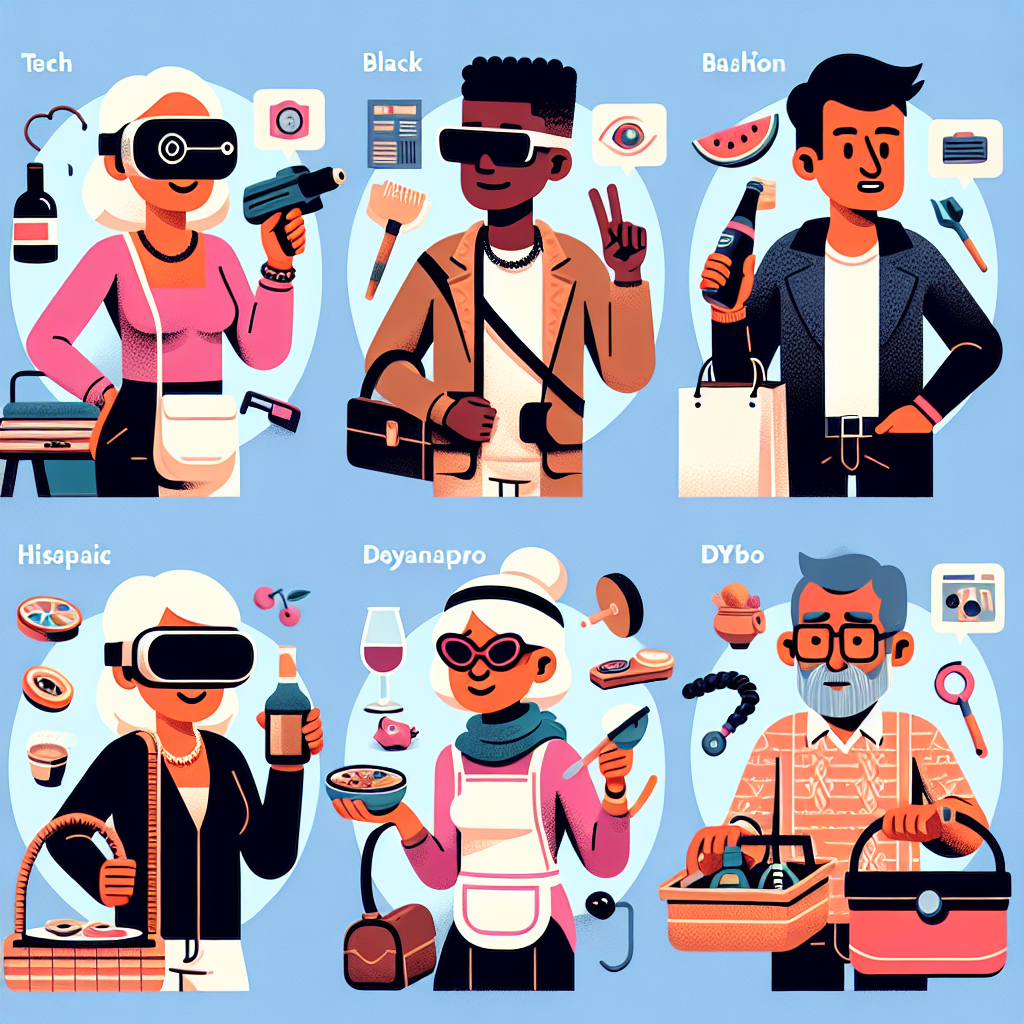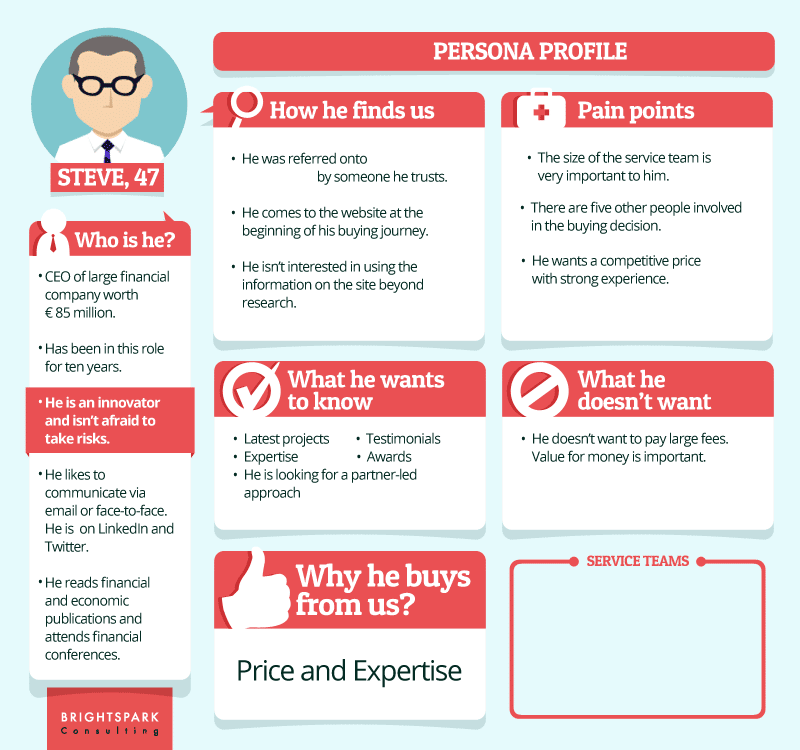Unlock the power of buyer personas with these 10 advanced examples that will revolutionize your marketing strategy. Dive in now!

Image courtesy of via DALL-E 3
Table of Contents
Introduction to Buyer Personas
In the world of marketing, understanding your audience is crucial. This is where Buyer Personas come into play. But what exactly are Buyer Personas?
What Is a Buyer Persona?
A Buyer Persona is like a detailed character sketch of your ideal customer. It helps businesses understand who their customers are, what they like, what challenges they face, and how they make purchasing decisions. Essentially, it’s creating a fictional representation of your target audience.
Why Are Buyer Personas Important?
Knowing your Buyer Personas is essential for creating targeted marketing strategies. By understanding the specific needs, preferences, and behaviors of your customers, you can tailor your products, services, and messaging to resonate with them effectively. Ultimately, this leads to more successful marketing campaigns and higher customer engagement.
Now that we have a basic understanding of Buyer Personas, let’s dive deeper into how to develop them and why they’re crucial for business success.
Getting Started with Buyer Personas
When you start creating buyer personas, the first step is to gather basic information about your customers. This includes details like their age, location, interests, and buying habits. Knowing these facts can help you understand who your customers are and what they need.
Using Surveys and Interviews
Surveys and interviews can be valuable tools for collecting information to build accurate buyer personas. Surveys allow you to ask specific questions to a large group of people, while interviews give you more in-depth insights from individual customers. By using these methods, you can gain a better understanding of what motivates your customers and how they make purchasing decisions.
Going Beyond Basic Buyer Personas
When it comes to understanding your customers and creating effective marketing strategies, going beyond basic buyer personas can make all the difference. By delving deeper into customer pain points and analyzing behavior, you can create more detailed and insightful buyer personas that truly resonate with your target audience.

Image courtesy of marketinginsidergroup.com via Google Images
Understanding Customer Pain Points
Customer pain points are the problems, challenges, and frustrations that your customers face. By identifying and understanding these pain points, you can tailor your products and services to better meet their needs. Conduct surveys, interviews, or social media listening to uncover what issues are most pressing for your customers. By addressing these pain points in your marketing messages, you can connect with your audience on a deeper level.
Analyzing Customer Behavior
Customer behavior can reveal a lot about your target audience. By analyzing how customers interact with your website, respond to your emails, or engage with your social media posts, you can gain valuable insights into their preferences, interests, and habits. This data can help you segment your audience more effectively and create buyer personas that are based on real behaviors rather than assumptions. Understanding your customers’ behavior can also guide your marketing strategies, ensuring that you reach them through the right channels with the right messages.
Creating Different Buyer Personas
In marketing, it’s essential to understand that not all customers are the same. Different people have varying needs, preferences, and behaviors. That’s where creating different buyer personas becomes crucial. Let’s dive into how you can segment your audience and develop various buyer personas to tailor your marketing strategies effectively.
Segmenting Your Audience
Segmenting your audience means dividing them into smaller groups based on specific criteria. This could include demographics (age, gender, location), psychographics (interests, values, behaviors), or firmographics (company size, industry). By segmenting your audience, you can create more targeted and personalized buyer personas.
Examples of Different Buyer Personas
Let’s look at a couple of examples to illustrate the concept of different buyer personas:
1. The Trendy Teenager: This buyer persona is a tech-savvy individual aged 15-18, who is always on the lookout for the latest gadgets and trends. They are active on social media platforms and influenced by online influencers.
2. The Busy Professional: This persona is a working adult aged 30-40, who values convenience and efficiency. They are likely to be interested in productivity tools, time-saving services, and work-life balance solutions.
By creating these detailed buyer personas, you can tailor your marketing messages, product offerings, and promotional strategies to better resonate with each segment of your target audience.
Using Buyer Personas in Marketing
Buyer personas are crucial tools that businesses can use to create effective marketing strategies. By understanding the specific needs, preferences, and behaviors of their target customers, businesses can tailor their marketing efforts to resonate with their audience. Let’s explore how to employ buyer personas in your marketing strategy.

Image courtesy of www.freepik.com via Google Images
Personalizing Marketing Messages
When utilizing buyer personas in marketing, it’s essential to personalize your messages to cater to the unique characteristics of each persona. By crafting messaging that speaks directly to the needs and pain points of a particular buyer persona, you can increase engagement and conversions.
Choosing the Right Channels
Another key aspect of using buyer personas in marketing is determining the most effective channels to reach your target audience. Different buyer personas may prefer to engage with brands through various channels such as social media, email, or in-person events. By understanding the preferred channels of each persona, you can allocate your marketing resources more efficiently.
Buyer Persona Examples
In the tech industry, a buyer persona could be a young professional named Tech-Savvy Sarah. Sarah is in her mid-20s, lives in a metropolitan area, and works in a creative field. She is always on the lookout for the latest technological gadgets and is active on social media platforms. Sarah values convenience and efficiency in her tech purchases and is willing to invest in high-quality products that make her life easier.
Retail Industry Buyer Persona
For a retail store, let’s consider Budget-Conscious Bob. Bob is a middle-aged father of two who prioritizes value and affordability when shopping. He is price-sensitive and often compares prices online before making a purchase. Bob prefers traditional shopping experiences over online shopping and values personalized customer service.
Service Industry Buyer Persona
In the service industry, an example of a buyer persona could be Busy Bee Brian. Brian is a small business owner in his early 40s who is always short on time. He is looking for service providers who can offer quick and efficient solutions to his company’s needs. Brian values reliability, professionalism, and clear communication from service-based businesses.
Fine-Tuning Your Buyer Personas
When it comes to honing your buyer personas, feedback is key. Gathering ongoing feedback from your customers allows you to stay in tune with their evolving needs and preferences. Whether through surveys, social media interactions, or direct conversations, listening to what your customers have to say can provide valuable insights for refining your buyer personas.

Image courtesy of rockcontent.com via Google Images
Updating Your Personas
Buyer personas are not set in stone. As markets change and customer behaviors evolve, it’s essential to update your personas accordingly. Keep a close eye on emerging trends, new data, and feedback from your audience to ensure that your personas remain accurate and effective. By staying proactive and flexible in updating your personas, you can better align your marketing strategies with the needs of your target customers.
Common Mistakes to Avoid
When creating buyer personas, it’s essential to steer clear of some common pitfalls that can hinder the effectiveness of your marketing strategies. Let’s take a look at two key mistakes to avoid:
Too General Personas
One of the biggest mistakes businesses make is creating overly generalized buyer personas. When personas lack specific details and are too broad, they fail to provide valuable insights for targeted marketing efforts. For instance, defining your buyer persona simply as “women aged 25-45” without delving deeper into their preferences, pain points, and motivations can lead to generic messaging that doesn’t resonate with your audience.
Instead, strive to develop detailed personas that paint a clear picture of your ideal customers. Include specifics like job titles, hobbies, challenges, and purchasing behaviors to tailor your marketing strategies effectively.
Ignoring Data
Another common mistake is ignoring real data when creating buyer personas. Relying solely on assumptions or gut feelings can result in inaccurate representations of your target audience. Without factual insights, your marketing efforts may miss the mark and fail to engage potential customers.
To avoid this pitfall, gather and analyze relevant data from sources like customer surveys, website analytics, and social media insights. Use this information to shape your buyer personas and ensure they are grounded in reality. By staying data-driven, you can create personas that resonate with your audience and drive successful marketing campaigns.
Conclusion
In conclusion, understanding buyer personas is crucial for businesses to create effective marketing strategies and connect with their target audience on a deeper level. By going beyond the basics and delving into the specifics of customer pain points and behavior, businesses can develop more nuanced and detailed personas that truly reflect their customer base.

Image courtesy of blog.hubspot.com via Google Images
It is essential to segment your audience and create multiple buyer personas to cater to different customer segments. This allows for personalized marketing messages and the selection of appropriate channels to reach the right audience effectively. By continually updating and refining these personas based on feedback and new data, businesses can stay relevant and responsive to changing market trends.
Avoiding common mistakes, such as creating overly general personas and ignoring real data, is key to the success of any buyer persona strategy. By staying grounded in accurate and detailed information, businesses can ensure that their personas are accurate representations of their customer base.
Overall, the process of creating and using detailed buyer personas requires ongoing effort and attention to detail. By following the guidelines outlined in this article and continuing to refine and improve personas over time, businesses can enhance their marketing efforts and better connect with their customers.
Want to turn these SEO insights into real results? Seorocket is an all-in-one AI SEO solution that uses the power of AI to analyze your competition and craft high-ranking content.
Seorocket offers a suite of powerful tools, including a Keyword Researcher to find the most profitable keywords, an AI Writer to generate unique and Google-friendly content, and an Automatic Publisher to schedule and publish your content directly to your website. Plus, you’ll get real-time performance tracking so you can see exactly what’s working and make adjustments as needed.
Stop just reading about SEO – take action with Seorocket and skyrocket your search rankings today. Sign up for a free trial and see the difference Seorocket can make for your website!
Frequently Asked Questions (FAQs)
How Many Buyer Personas Do I Need?
Having the right number of buyer personas is essential for understanding your target audience effectively. The number of personas you need depends on the diversity of your customer base. If your business serves a wide range of customers with different needs, it’s beneficial to create multiple personas to cater to each segment. Conversely, if your customer base is more homogeneous, a smaller number of personas might suffice. A good starting point is to create 3-5 buyer personas representing the primary customer segments.
What If I Don’t Have Enough Data?
If you find yourself lacking sufficient data to build robust buyer personas, there are still ways to proceed. Consider starting with the information you do have, such as basic demographics and insights from customer interactions. You can also conduct surveys or interviews to gather additional data directly from your audience. Another helpful approach is to look at industry research or studies to gain a better understanding of your target market. While having more data is ideal, even a basic buyer persona can provide valuable insights to guide your marketing strategies.







